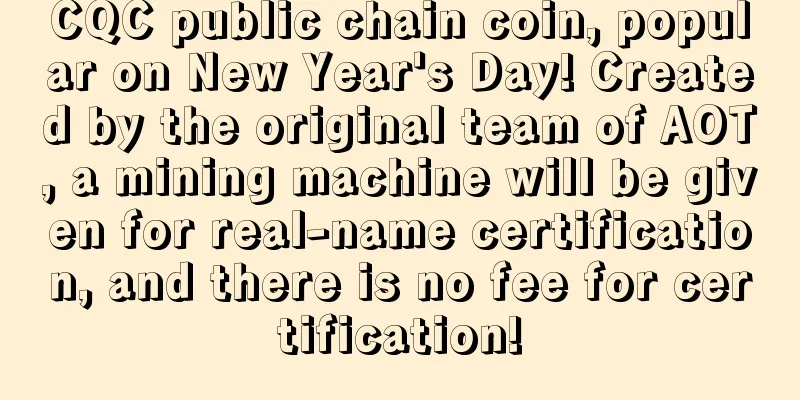|
"Just like building a 5G network, a large number of base stations can only prove that your technology is strong. But in terms of scale, we definitely hope that more people will connect to the network with their mobile phones and use this network. In this regard, we still have a long way to go. We hope that blockchain technology can truly empower all walks of life." On March 3, Professor Long Fan, director of the Shanghai TreeGraph Blockchain Research Institute, told a reporter from the China Times in an interview.
On February 27, at the "Shanghai Blockchain Innovation and Strategy Promotion Conference and Major Achievements Release Conference", the "Conflux Tree Graph Blockchain Public Chain System Version 1.0" independently developed by the Shanghai Tree Graph Blockchain Research Institute was officially unveiled. The system has completely independent intellectual property rights and breaks the monopoly of the underlying code of European and American computer systems.
Wang Ye, deputy director of the Shanghai Science and Technology Commission, expressed at the press conference that he hopes TreeGraph will further strengthen the development of underlying blockchain technologies and the construction of an open source ecological environment, actively carry out research on international blockchain standards, make more contributions to Shanghai, gather stronger Chinese strength, and have a greater international impact.
From 0 to 1, breaking the monopoly of Europe and the United States. The reporter of China Times learned that the "Conflux Tree Graph Public Chain System Version 1.0" completed the main network launch on October 29 last year, and has formed more than 5,000 online consensus nodes, ranking the top three in the world in terms of the number of nodes. After more than 4 months of stable operation, the system has processed more than 4 million transactions from tens of thousands of users so far, with an average of about 40,000 transactions per day, and there has never been any transaction congestion during this period. The performance is far superior to similar public chain systems.
The Institute innovatively proposed a high-performance consensus sorting algorithm for tree-graph blocks, which broke through the technical bottlenecks of blockchain in terms of transaction throughput (TPS) and confirmation latency without sacrificing security and decentralization.
Compared with the two most representative public chains in the world: Bitcoin and Ethereum, we can see the advantages of tree graphs more intuitively. Bitcoin can process up to 7 transactions per second, and the transaction confirmation time is about 1 hour; Ethereum can process about 30-40 transactions per second, and the transaction confirmation time is 10 minutes. The Conflux Tree Graph public chain system version 1.0 has achieved a throughput of more than 3,000 transactions per second and compressed the transaction confirmation time to less than 30 seconds, which is 428 times the performance of the existing public chain Bitcoin system and 75 times that of the Ethereum system.
Professor Long Fan told the reporter of China Times that the development level of blockchain technology can be viewed from two dimensions, one is the technical dimension and the other is the ecological dimension. Ethereum is the representative of the public chain 2.0 stage. They have limited performance but support smart contracts. At present, as a platform, Ethereum's on-chain assets, decentralized finance, and some other applications are booming. In the public chain 2.0 stage, due to the dominance of Ethereum, it can be said that Europe and the United States have an absolute advantage in ecology.
However, the rapid development speed has led to the perception that the performance issues of public chain 2.0 are not enough to support the development scale of these applications. Since the congestion problem of public chain 2.0 always exists, everyone is calling for public chain 3.0. Treegraph blockchain is the representative of public chain 3.0. At the same time, there are also some projects in Europe and the United States that are working hard to complete the attempt of higher performance public chain. "In terms of technology, we are very confident. To be conservative, we are at least on par with Europe and the United States. To be more confident, we are slightly ahead." Long Fan said.
On the other hand, regarding ecological competition, Long Fan believes that whoever can attract more public chain 2.0 applications and assets will be able to gain ecological advantages. In terms of ecology, my country is currently a little behind, but we have been working hard. In general, although some public chain 3.0 projects in Europe and the United States are not so perfect in technology, they started a little earlier than us in ecological construction.
So how can we expand the influence of my country's public chain 3.0 ecosystem? Long Fan said that the key is to explain it clearly to more people, to tell everyone what blockchain is, what public chain is, and what public chain can do.
Long Fan admitted that at present, more people are aware of blockchain technology based on the rise and fall of digital currencies such as Bitcoin. This is a matter of both advantages and disadvantages. Its disadvantage is that everyone will preconceivedly believe that blockchain technology is a thing specifically used for speculation. Everyone will think that this thing seems to be only used for finance and has little to do with the people.
"In fact, this is limited by the performance of the public chain 2.0 era. When 3.0 technology emerged, the throughput made a qualitative leap, and the cost of each transaction actually decreased. It's like in the 2G and 3G eras, when you used WeChat, you would feel sorry for the traffic, but now you don't feel that way at all. This is actually a natural law, but because of the inherent understanding of some people in society, we need to do more popular science work, and we are willing to do such work." Long Fan told the China Times reporter.
my country's blockchain technology is developing rapidly. In recent years, Shanghai has continuously promoted technical research in the blockchain field. According to the latest statistics of the "Shanghai Blockchain Technology Development White Paper", there are more than 400 companies in Shanghai engaged in blockchain technology research and development and application, and characteristic industrial parks such as Xuhui West Bank, Yangpu Blockchain Building, Jing'an Shibei Blockchain Ecological Valley, and Hongkou Financial Technology Building have been initially formed.
Not just Shanghai, in the past 2020, the Chinese government and all walks of life have been supporting and regulating the development of blockchain technology, creating a good development atmosphere for blockchain to empower the real economy. On April 20, 2020, the National Development and Reform Commission held a press conference and clearly listed "blockchain" as the information infrastructure in the new infrastructure. On July 22, the central bank issued the "Notice on Promoting the Standardized Application of Blockchain Technology" and the "Evaluation Rules for Financial Applications of Blockchain Technology", providing objective, fair and implementable evaluation rules for the financial application of blockchain technology, and ensuring the safe and stable operation of blockchain financial facilities and applications.
Wang Kun, an expert from China Blockchain Think Tank, said that my country attaches great importance to the development of blockchain technology. At this stage, my country still has a leading advantage in blockchain technology. Whether it is Tsinghua University, the Chinese Academy of Sciences, or related research institutes, they all have a certain voice in the international arena and have seized the initiative.
The popularity of blockchain continues. On February 7, the Global Blockchain Industry Panorama and Trend Annual Report (2020-2021) jointly produced by Tsinghua University Internet Industry Research Institute and other units was officially released. The report pointed out that in 2020, global corporate blockchain spending reached US$4 billion, maintaining rapid growth. Compared with the total spending of enterprises in the IT field, the penetration rate of the blockchain industry is about 1%, and it is expected to double in the next two years.
As an important direction of new infrastructure, as the enabling role of blockchain in the digital economy and real economy is gradually widely recognized and accepted, blockchain technology has returned to the regular development path, and companies focusing on the implementation of technology have begun to enter the public eye. Financial and technology industry giants have entered the market one after another and continuously increased their investment in blockchain, while also pushing blockchain to the forefront again.
In this regard, Su Xiaorui, an expert in the financial technology industry, told the China Times reporter that the healthy development of the blockchain industry cannot be separated from the active participation of all parties: at the government level, it is necessary to strike a balance between innovation and prudence and build a flexible and incentive-based regulatory mechanism; at the industry level, it is necessary to give full play to the professional functions of industry organizations to connect institutions and governments, and create a good ecology for the development of blockchain through the establishment of cooperation mechanisms and the construction of shared platforms; at the institutional level, it is necessary to increase the exploration and tackling of new technologies, actively participate in government-led financial technology innovation regulatory pilot projects, enhance the core competitiveness of institutions, and use technology-driven models as their foundation. |










